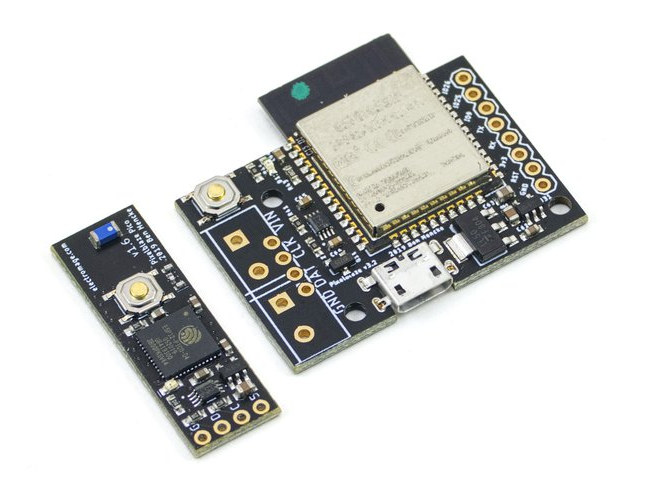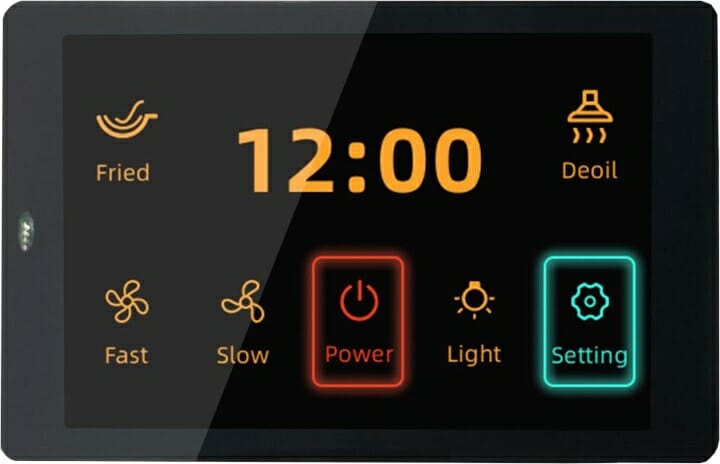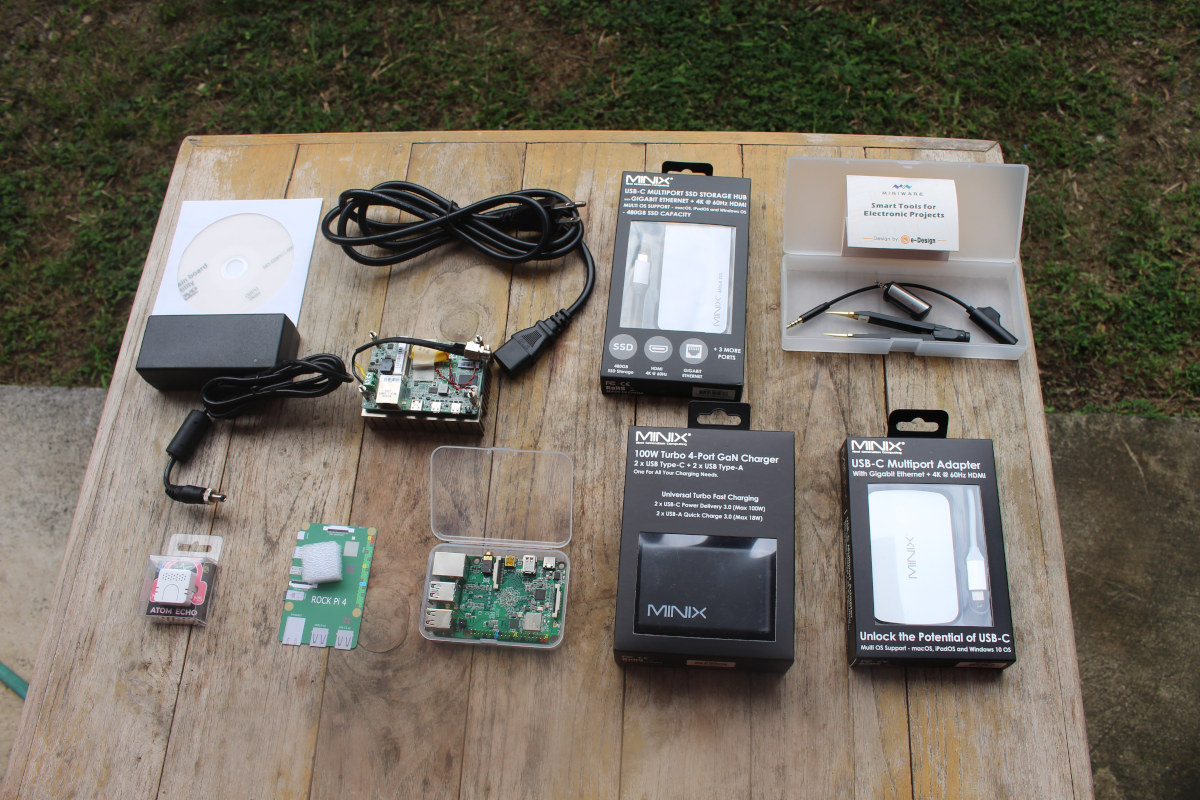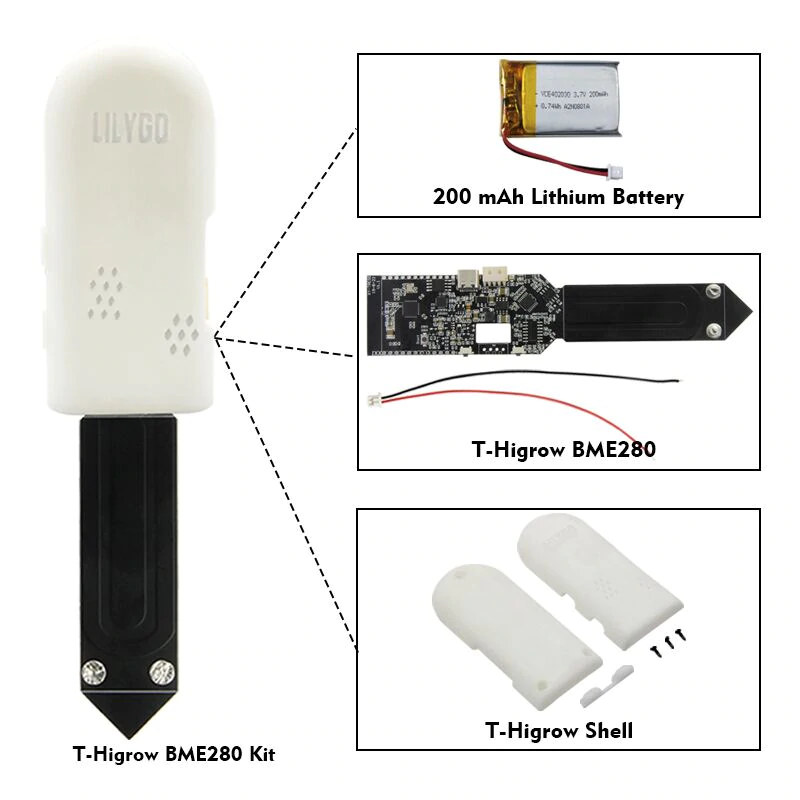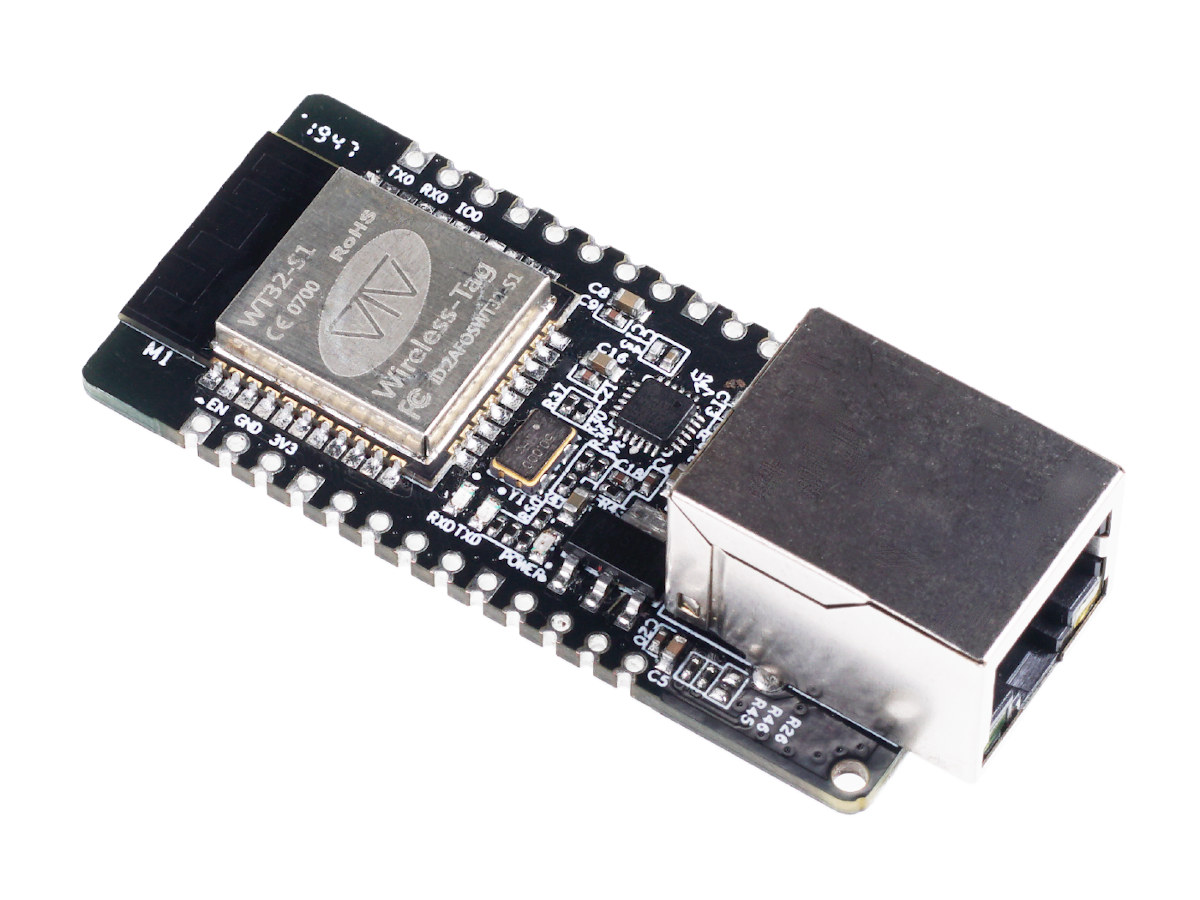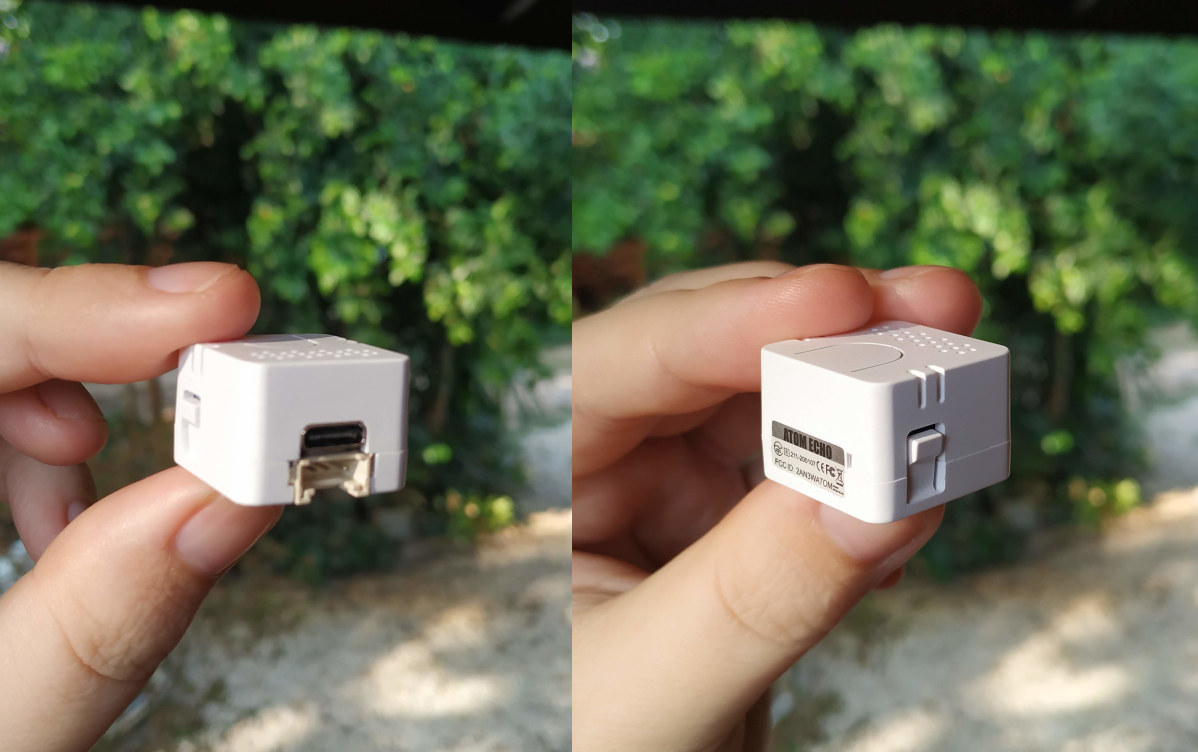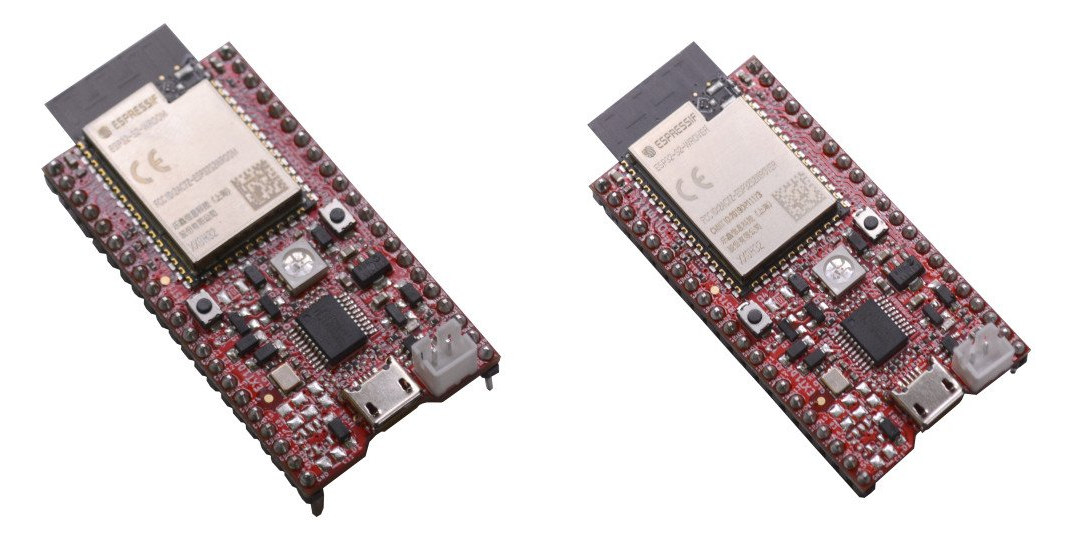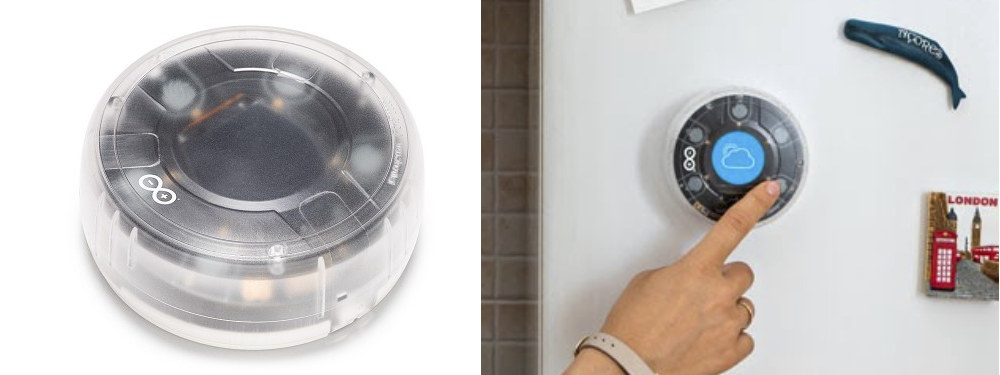We’ve previously covered a couple of ESP8266 WiFi boards to control LED strips from ANAVI Technology ESP8266 powered ANAVI Miracle Controller and ANAVI Light Controller Starter Kit, but Ben Henke has also made similar ESP8266 LED controllers with PixelBlaze boards. The latest iteration – PixelBlaze v3 – is based on ESP32 WiSoC and comes in two variants: PixelBlaze v3 Standard with headers and PixelBlaze V3 Pico in a much tinier form factor (33.3 x 11mm) with both models supporting live-coding via a web interface. PixelBlaze v3 specifications: Wireless SiP or module Standard – ESP32-WROOM-32 module with Espressif ESP32 dual-core processor @ 240 MHz with 4MB flash Pico – ESP32-PICO-D4 system-in-package with Espressif ESP32 dual-core processor @ 240 MHz with 4MB flash 4-pin header with VCC, GND, DATA, CLK for LED matrix or strip Compatible with APA102, SK9822, DotStar, WS2811, WS2812 (up to 2,500 LEDs), WS2813, WS2815, NeoPixel, and WS2801 actively […]
WT32-SC01 is a thin 3.5-inch ESP32 color touchscreen display
Looking for an ESP32 board with a color touchscreen display? There is plenty of choices here, including Espressif Systems own ESP32-S2-Kaluga-1 multimedia devkit with a 3.2-inch display or M5Stack Core2 with a 2-inch display. But if you’d like a thinner and larger display, Tag Wireless WT32-SC01 is an ESP32-powered 3.5-inch color display with a 2-point capacitive touchscreen designed to be integrated into your own project or product. WT32-SC01 WiFi display specifications: Wireless Module – ESP32-WROVER-B module based on ESP32-D0WD dual-core processor up to 240 Mhz with 4MB SPI flash, 8MB PSRAM, 2.4GHz WiFi 802.11 b/g/n up to 150 Mbps, and Bluetooth 4.2 LE Display – 3.5-inch 480×320 display (SPI) with 2-pin capacitive touchscreen (I2C) Expansion – 2x 40-pin I/O pads with GPIO, I2C, VN/VP, I2S, UART, 5V, 3.3V, GND Misc – Reset button (6), power and UART LEDs Power Supply – 5V/1A via USB type-C port for display only, or […]
Giveaway Week 2020 winners announced
CNX Software’s “Giveaway week 2020” took place last week with 7 different prizes including three MINIX accessories (USB-C hubs and USD PD charger), M5Stack Atom Echo ESP32 based programmable speaker, Miniware DT71 smart tweezers, and two SBC’s namely RockPi 4C and Ryzen Embedded based DFI GHF51. All people had to enter was to leave a comment with the country to which the parcel would have to be sent. With the help of random.org, we now have selected and confirmed winners which all happen to come from the US or Europe this time around: MINIX NEO Storage Plus USB-C Hub with 480GB SSD – Marc, USA Miniware DT71 Smart Tweezers – xdcc_master, GERMANY MINIX NEO C-G USB-C Multiport Adapter – Barnaby, UK RockPi 4C SBC – Garrett, USA M5Stack Atom Echo ESP32 Speaker – Venet, ITALY MINIX NEO P2 100W USB-C Charger – Michal, SLOVAKIA DFI GHF51 Ryzen Embedded SBC – […]
TTGO T-Higrow is a WiFi & Bluetooth connected soil temperature & moisture sensor
LilyGO has made plenty of ESP32 “TTGO” boards with various features be it PoE, battery support, OLED display, cellular connectivity, and even a devkit in watch form factor. The latest product from the company specifically targets smart farming/gardening as TTGO T-Higrow embeds either DHT11 temperature and humidity sensor or BME280 temperature, humidity, and barometric sensor to report soil temperature and moisture over Bluetooth or WiFi. It can also come as a kit with a battery and a 3D printed enclosure. TTGO T-Higrow board specifications: SoC – Espressif Systems ESP32 dual-core LX6 processor @ up to 240 MHz with 520 LB SRAM, Wi-Fi & Bluetooth Storage – 4MB QSPI flash Wireless 2.4 GHz 802.11b/g/n WiFi 4 up to 150 Mbps Bluetooth 4.2 BR/EDR and BLE Sensors Option 1 – DHT11 temperature and humidity sensor Option 2 – BME280 temperature, humidity, and barometric sensor Expansion – 2x 12-pin through holes with UART, […]
$6 WT32-ETH01 is a Tiny ESP32 board with Ethernet
Espressif Systems ESP32 processor supports WiFi, Bluetooth, and Ethernet connectivity. There are only a few boards coming with an Ethernet RJ45 jack out of the box including esp32MX-E ESP32 board, TTGO T-Internet-POE, and Olimex ESP32-Gateway board among others. Those boards are fine, but they sell for $16 and up, so if you’d like a cheaper and tinier ESP32 board with Ethernet, Wireless Tag WT32-ETH01 may be an option for projects not requiring PoE support. WT32-ETH01 board specifications: Wireless Module – Wireless Tag WT32-S1 based on ESP32 dual-core WiSoC with 4MB flash, on-board antenna Connectivity 10/100M Ethernet via LAN8720A transceiver 2.4 GHz 802.11b/g/n WiFi 4 up to 150 Mbps Bluetooth 4.2 BR/EDR and LE Expansion – 2x 13 through holes and castellated holes with GPIOs, I2C, SPI, 2x UART, EN, LINK, 5V, 3.3V, and GND signals Power Supply – 3.3V or 5.5V via headers, minimum 500 mA; typical operating current: 80 […]
Giveaway Week – M5Stack Atom Echo ESP32 Speaker
I reviewed M5Stack Atom Echo Bluetooth speaker powered by ESP32 earlier this year, and that will be the fifth prize of Giveaway Week 2020. It’s very much like a (low-quality) Bluetooth speaker, but you can program it with the Arduino IDE to do whatever you want. There’s also a Grove connector and I/O headers to control external modules. There’s no battery, so a USB-C cable is needed for power. To enter the draw simply leave a comment with your country and whatever else you’d like to say. If the country is missing, I’ll consider the entry void. Other rules are as follows: Only one entry per contest. I will filter out entries with the same IP and/or email address. Contests are open for 48 hours starting at 11 am (Bangkok time) every day. Comments will be closed after 48 hours. If comments are open, the contest is still going on. […]
ESP32-S2 board targets battery-powered applications with 30uA deep sleep power consumption
A few months ago, Olimex unveiled renders of ESP32-S2-Devkit-LiPo WiFi board that was supposed to consume as little as 2uA in sleep mode, follows ESP32-S2-Saola-1 board form factor and pinout, and adds an ultra-efficient circuitry to support LiPo batteries. The good news is that Olimex has now launched two versions of their ESP32-S2 board optimized for battery-powered applications with ESP32-S2-DevKit-Lipo and ESP32-S2-WROVER-DevKit-Lipo (with 2MB PSRAM) going for 5.56 Euros and 6.36 Euros respectively. ESP32-S2-DevKit-LiPo specifications: Wireless module: ESP32-S2-DevKit-LiPo – ESP32-S2-WROOM with Espressif ESP32-S2 single-core 32-bit LX7 microprocessor up to 240 MHz with 128 KB ROM, 320 KB SRAM, 16 KB SRAM in RTC, 4MB SPI flash ESP32-S2-WROVER-Devkit-LiPo – ESP32-S2-WROVER – same as above plus 2MB PSRAM Wireless connectivity – 2.4 GHz 802.11 b/g/n WiFI 4 up to 150 Mbps Expansion – 2x 20-pin I/O headers with SPI, I2S, UART, I2C, touch sensors, PWM, etc… (pin-to-pin compatible with ESP32-S2-SAOLA-1) Debugging – […]
Oplà IoT Kit is Arduino’s first open programmable IoT platform
Arduino is well-known for its maker boards and shields that are sometimes sold as part of kits to experiment with electronics. Arduino Oplà IoT kit is a little different as it looks more like an actual consumer product once assembled. Powered by an Arduino MKR WiFi 1010 board, it is designed to make getting started with IoT easy for beginners, while still allowing more advanced users to customize and hack their smart home applications. Arduino Oplà IoT Kit is comprised of several hardware components: MKR IoT carrier with a 1.2-inch OLED color display, onboard environmental sensors (temperature, humidity, pressure, light, and proximity), IMU sensor, Grove connectors, two 24V relays, and five capacitive touch buttons. Arduino MKR WiFi 1010 board powered by Microchip SAMD21 Cortex-M0+ MCU and equipped with a 2.4 GHz WiFi 4 and Bluetooth 4.2 module based on ESP32 chip. Sensors – PIR motion sensor and moisture sensor A […]


